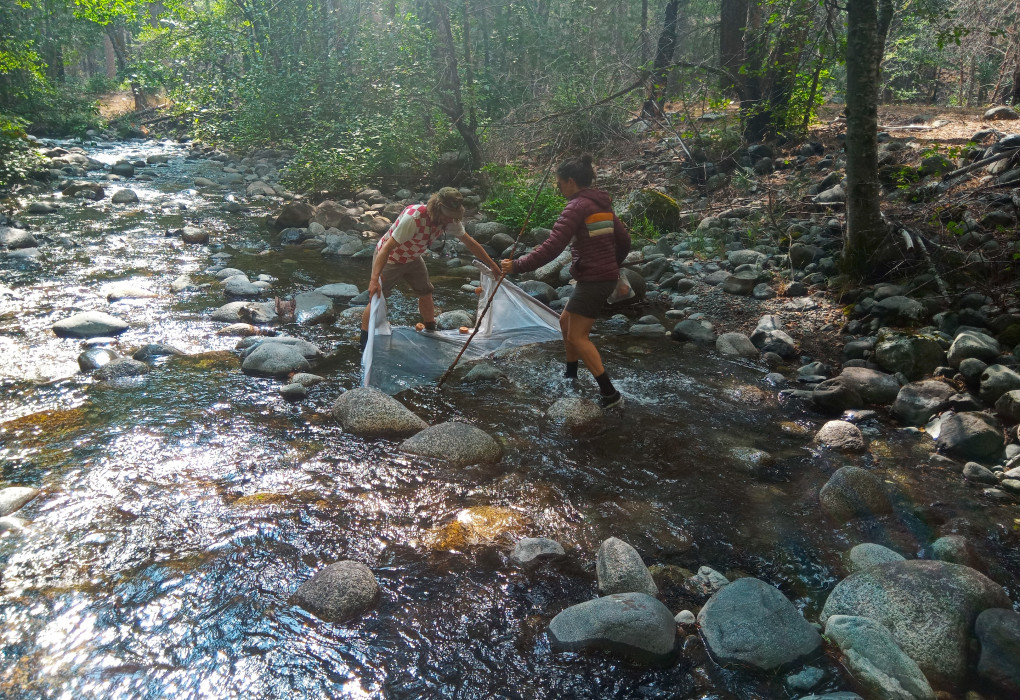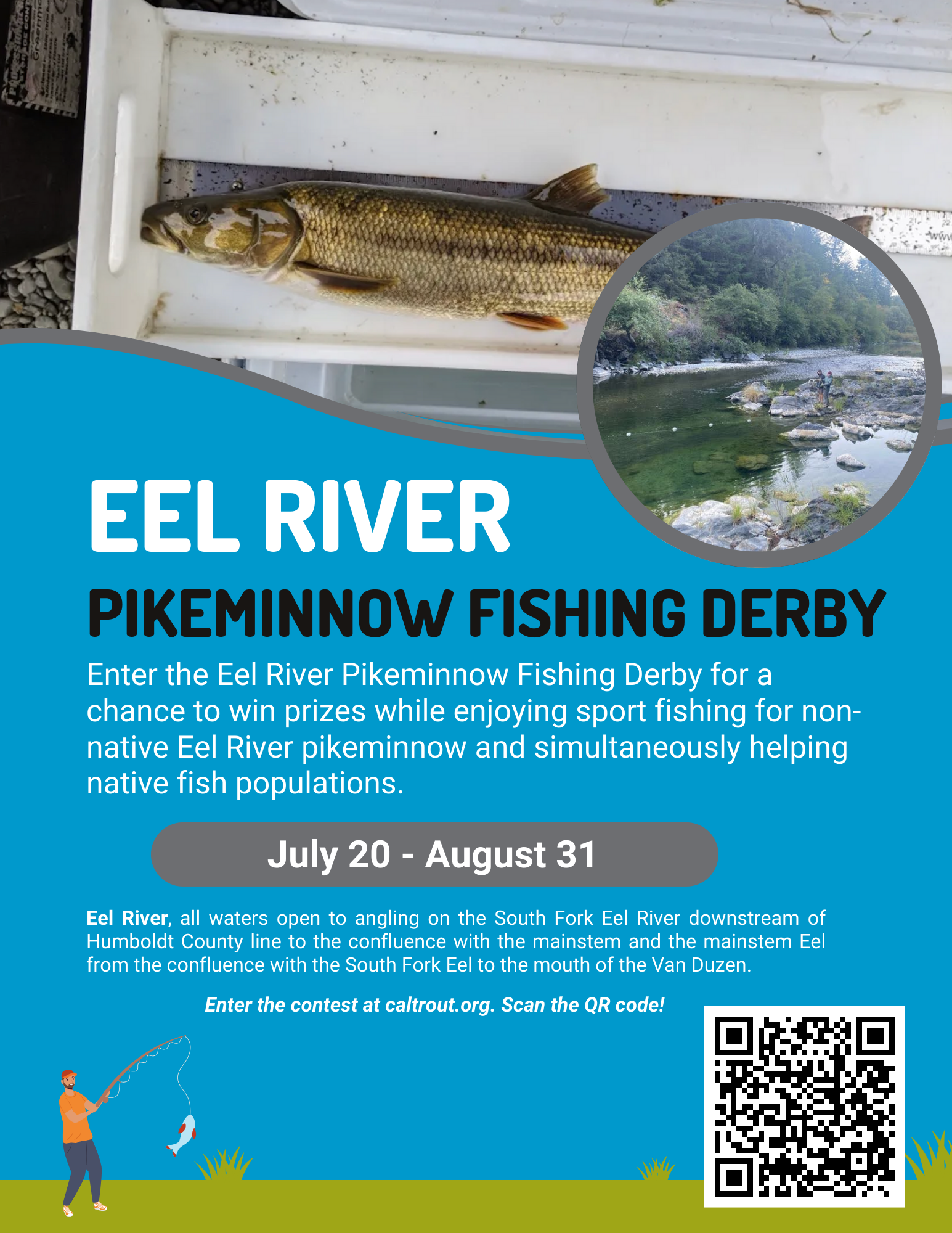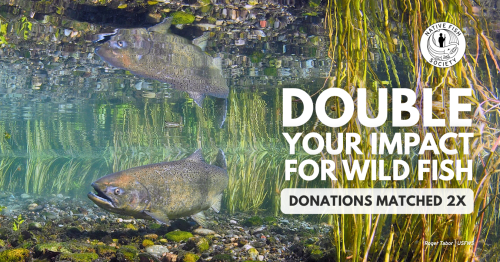StEELhead Discoveries Series - Part 12: August 2024
*This is Part 12 of an ongoing series on the campaign to Free the Eel and efforts to better understand and revive the iconic steelhead in the Pacific Northwest by Native Fish Society Fellow Samantha Kannry. View all parts of the series HERE. Additional parts and updates will be posted over the next several months. Stay tuned!
~ ~ ~ ~ ~ ~
"This summer’s early field season has found us in some serious heat, along with the rest of the West. What better way to stay cool than snorkeling in a cold stream, looking at and trying to catch juvenile fish? We have been further developing our fish-catching methods, incorporating techniques that can be successful during daylight hours, to enable us to sample more sites and see a wider diversity of locations. The nighttime dipnetting will always be a favorite method, because of its rate of success and versatility in many different types of habitats. The main drawback being that with nighttime netting you can only sample one site in a day, unless you are driving to multiple sites in close proximity to each other (which we are often not, but rather on foot going to more difficult to access locations).
The additional techniques we are using involve seine nets, snorkels and hook and line. Hook and line sampling is always an enjoyable method, but in most locations, we are targeting young-of-the-year fish to understand what areas are being used by different life-history types for spawning. However, there are some locations, such as above complete natural barriers and dams, where the young-of-the-year numbers are so low, and the fish migration is limited that we augment our samples with larger juveniles. In these spots, we find the right fly and meander between pocket water and pool tailouts, following our quarry.
In addition to traditional uses of seine nets (i.e. corralling fish into the net by moving with it and wrapping it around itself), we also try with one person boogieing down the creek trying to spook fish into the net, either on foot or snorkeling. When snorkeling and seining the name becomes “snerding” or snorkel-herding. This method is particularly enjoyable wetsuit-free on those 100+ degree days, when hiking requires wet t-shirts and dipping your head in every little trickle you come across.
Our recent trips have been to the upper Trinity, mid-Klamath and Middle Fork Smith Rivers. In the next couple weeks we will visit some mid-Trinity and mid-Klamath tributaries. A smorgasbord of sampling methods will be used.
In the interim, we are trying to get more folks to get out and participate in the Eel River pikeminnow fishing derby. The goal of this year’s derby is to get as many invasive pikeminnow out of the South Fork and lower Eel as we can, and see how we can implement a public-supported pikeminnow eradication program on the Eel. If you want to participate, check out https://tribresearch.org/pikeminnow/"
-Samantha Kannry
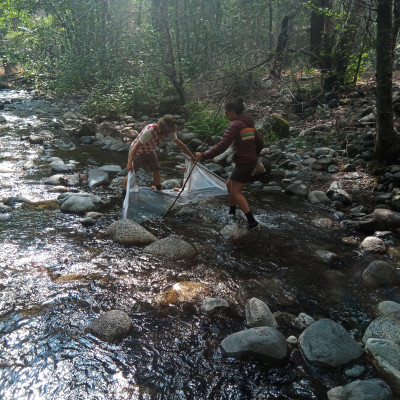

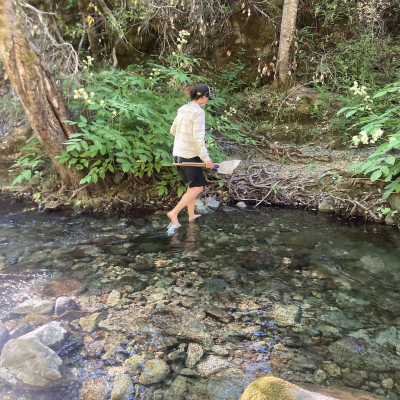
~~~~~
About the Author:
Samantha Kannry has been monitoring, studying, and swimming with summer-run steelhead in the Eel River and other rivers of Northwestern California for the past thirteen years. She joined NFS as a volunteer in 2015, then became a fish genetics fellow in 2020.
While it has been clear to the native peoples of the region since time immemorial that summer-run steelhead and the congeneric spring Chinook are separate populations, not everyone else sees it so clearly. Her research has focused on using conservation genetic tools to elucidate the distinction between summer and winter-run steelhead.
When not minking (a combination of hiking, swimming, snorkeling, sliding, shimmying, and boulder jumping) down rivers, she is usually growing and eating fruit, moving manure at Caudal Fin Farm, or bike touring distances large and small. All working towards re-establishing the inherent continuity between rivers, land, and people.
Read StEELhead Discoveries Part 1 - 11 HERE.
